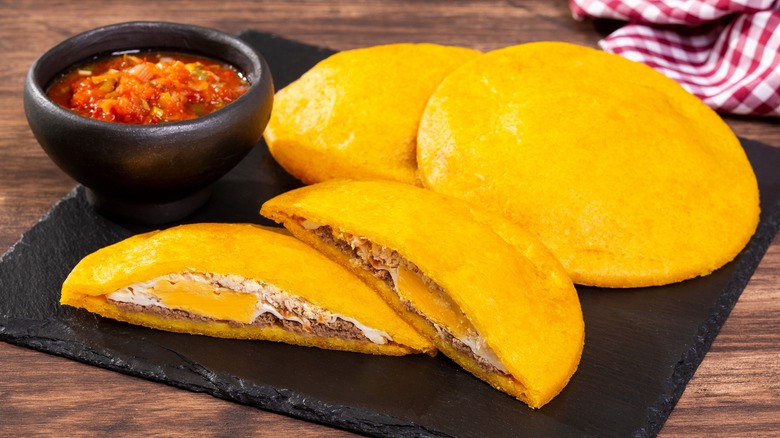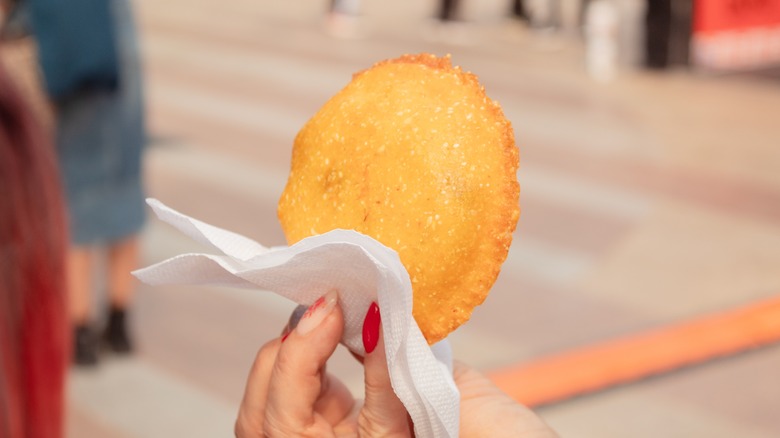The Key For Incredible Fried Egg Arepas Is Cooking Them Twice
If you visit Colombia or Venezuela, chances are much greater than zero that you end up with an arepa in your mouth at some point. The corn flour bread is a daily staple in those countries, and for good reason — even the simplest recipe offers a delicious piece of cooked bread, a perfect side to any meal. A heartier variation, though, is the twice-cooked arepa de huevo, or arepa stuffed with egg.
This particular version of the bread comes from the coastal region of Colombia and is a mainstay of Barranquilla and Cartagena. For an easy arepa de huevo, follow a standard arepa recipe. But as you complete the dough-making process through the first fry, save a small ball of dough for later. Once your arepas are golden brown on both sides and cool to the touch, it's time to crack open those eggs and get cooking again.
Slice open a hole of about 1 ½ to 2 inches on the side of the bread. Crack the egg into the pocket (you may need to use a bowl or other container to make the transfer clean), seal the hole with a small bit of the dough you saved earlier, then repeat with all arepas. Fry the arepas again, around three to four minutes, then remove.
Why is double frying key?
Whereas plain arepas can be grilled, baked, or fried, an arepa with egg relies on being fried not just once, but twice. This second fry allows the egg to cook until just set and helps the filling bind with the dough to create a cohesive bread. But why does double frying make it better? For the simplest answer: fried things are delicious. Whether at home, a fast food joint, or the county fair, and whether air, deep-fried, or twice-fried, foods that are fried generally just taste better. Ignoring flavor for a moment, the second fry also gives the arepa a crispy exterior. When you pair the crunchy shell of the arepa with the runny, "just-cooked" yolk — a near-perfect texture combination — it's no wonder it's such a popular dish.
When double frying, be sure to keep a watchful eye on your oil; using the wrong temperature oil can cause, ironically, both underheating and overheating and the last things you want in your arepa de huevo are a raw egg center or a soggy exterior. For arepas de huevo, the ideal oil temperature is around 350 degrees Fahrenheit. To gauge oil temperature, use a food-safe thermometer or this spoon trick if you're in a pinch.

